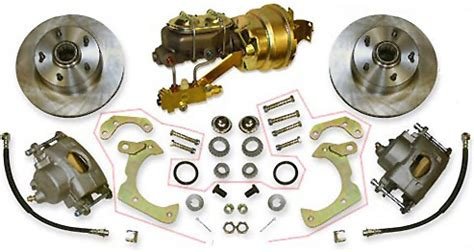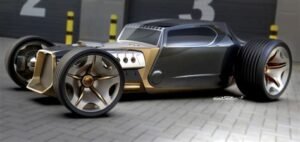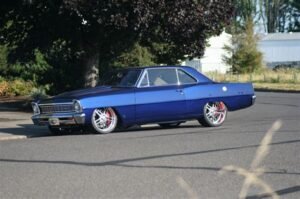
Classic beauties they may be, but when it comes to the braking system, this tends to be the biggest concern for most owners. Drum brakes do work well but are often ancient, offering none of the feel and ability to stop like a modern disc brake setup. If you want to give your classic car a much-needed improvement in its braking system, then a disc brake conversion is the way forward.
Picking the Right Kit
How to Install Disc Brakes – Step 1: Choosing the Right Conversion Kit
Many kits are available on the market, catering to various makes and models of vehicles. Therefore, selection of the right kit is important.
Things to Consider
Year, make, and model of your car: many different kits are designed specifically to work in or on specific vehicles.
Your budget: Disc brake conversion kits can range in price from several hundred dollars to several thousand dollars.
The extent of the performance required: Whether driving daily or for high-performance use, kits may be available for both.
Research and Comparison
From the time you have selected some choices, research about these kits in as much detail as possible. Check out reviews by other users, compare their features and specifications, and call up technical support in the company.
Expert Consultation
If you’re not certain which kit to purchase, be sure to consult with a professional mechanic or classic car restoration professional. They can give great advice tailored to your exact needs and vehicle.
Installation
A disc brake conversion kit is an advanced system to install and requires a good deal of mechanical aptitude and special tools. Installation should be left to the professionals unless you have extensive experience working with car brakes.
Component of the Typical Kit
Disc brake conversion kits are available with most of the following parts:
- Front disc brake calipers: This clamps the brake pads onto the rotors, creating friction to slow the vehicle down.
- Front rotors: These are the round metal discs that the brake pads press against.
- Brake pads: These are the friction material that comes into contact with the rotors.
- Brake lines: These connect the calipers to the master cylinder.
- Brake hose: This is a flexible hose that accommodates the motion in the steering.
- Hardware: This includes mounting brackets, bolts, and other miscellaneous hardware.
Installation Process
The process of installation involves a number of steps.
Step 1: Removal of Old Brakes
First, one has to remove the old drum brakes with their accompanying hardware. This may involve special tools depending on a make and model of your car.
Installation of New Brackets
This is where new brake brackets that will hold the calipers and rotors are mounted. A number of brackets may be subjected to changes and drilling for your vehicle.
Step 3: Installation of Rotors and Calipers
After having installed the brackets, you are to mount the rotors and calipers on them. Make sure everything is securely fastened and aligned properly.
Step 4: Bleeding of the Brakes
Bleeding of the brakes is usually done after installing a new set of brakes. By bleeding, you remove the air bubbles that might be trapped inside; this is very important as it determines the correct performance of the brakes and may prevent air locking in the system.
Advantages of Disc Brake Conversion
The installation of disc brakes on your classic car’s braking system carries a number of advantages including, but not limited to:
Improved Stopping Power
Disc brakes also boast much stronger stopping power than drum brakes. This is because there is greater surface area on the rotors and a more efficient design of the caliper.
Improved Responsiveness
The general responsiveness of disc brakes is greater compared to that of drum brakes; quicker application and more instantaneous force of braking. In situations that require immediate stopping, this could be important.
Reduced Fade
They are less prone to fade, a loss in braking performance due to the heat buildup. This is particularly important with those vehicles that see frequent driving or high-performance use.
Improved Pedal Feel
Disc brakes offer better pedal feel since the pedal response will be more consistent and responsive. Because of this, it will be easier to modulate the braking force and, generally, control the vehicle in question.
Easier Maintenance
Generally speaking, disc brakes are less maintenance-intensive than drum brakes. The pads are relatively easy to replace, and the rotors don’t wear down as quickly.
Conclusion
Disk brake conversion is, no doubt, a huge investment; however, it has a number of good advantages for classic car owners. With increased stopping power, responsiveness, and durability, this is a worth-it upgrade that should help bring more joy into your driving and even afford added security for you and other trafficants on the road. Just remember to do some research, choose the right kit for you, and consult a professional where needed. A well-planned and executed job may turn that classic car into more of a modern and reliable machine.




